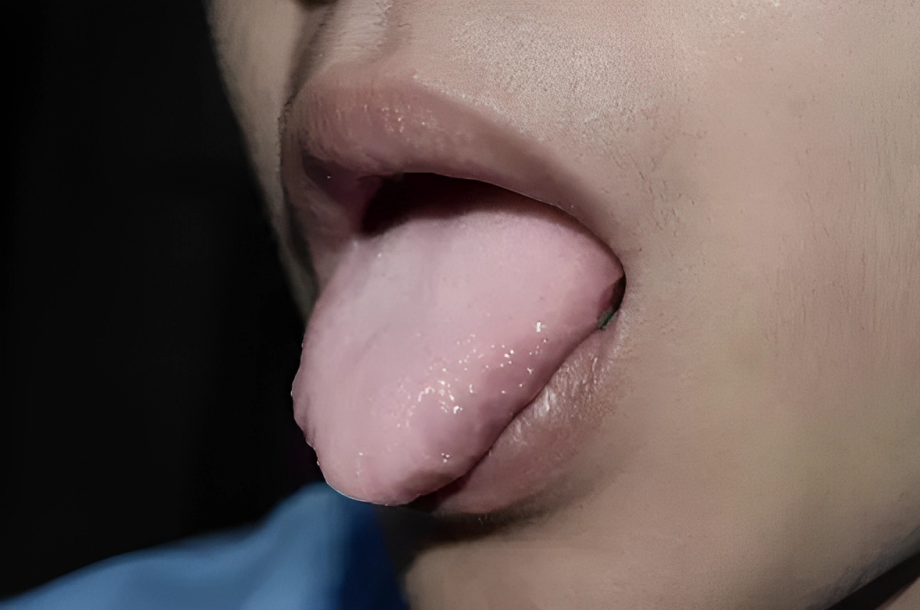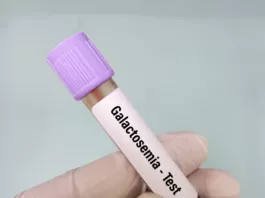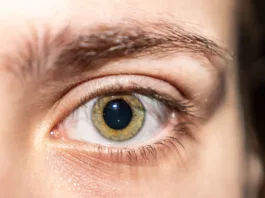What is Ageusia?
Aguesia is a condition characterized by a complete loss of taste function of the tongue. This is an uncommon condition that is associated with various pathologies.
Perception of taste is mediated by taste buds, and each taste bud consists of 50-100 tightly packed cells. If you have ageusia, you might be unable to detect the sweet, sour, bitter, and salty taste. It should be differentiated from other gustatory disorders such as hypoalgesia (in which the taste sensitivity decreases), hyperacusis (in which the taste sensitivity is increased), dysgeusia (in which there is an unpleasant sensation of the taste), and phantogeusia ( in which there is the perception of flavor in the absence of any stimulus).
Ageusia is not a fatal condition but can cause discomfort. People having ageusia complain about loss of appetite and weight reduction. Due to loss of taste, many people eat food by feeling the texture and smell.
Epidemiology
Complete loss of taste is usually uncommon. It occurs in only 1-2 people out of 1000. However, the function of taste buds to deliver the taste is reduced as age progresses, but not lost completely. 1Rathee, M. (2023, August 7). Ageusia. StatPearls – NCBI Bookshelf. https://www.ncbi.nlm.nih.gov/books/NBK549775/
Pathophysiology
Your tongue is an organ used in your daily routine for eating, speaking, and chewing. You eat things by checking their smell through the nose and taste through taste buds. Taste buds are the small ovoid-shaped bodies found on different sites of your oral cavity (papilla of tongue, pharynx, epiglottis, and palate). The apical portion of the taste buds contains taste receptors exposed to the oral cavity. Each taste bud consists of 4 cells. These are the following:
- Basal cells
- Type 1 light cells
- Type 1 dark cells
- Type 3 intermediate cells

Your body sheds off old taste receptors every ten days and is replaced by new ones. Basal cells are immature cells (stem cells) that eventually become taste receptors. In contrast, the rest of the three cells are mature and are responsible for transmitting taste signals. Any factor that alters or damages the taste buds can result in Ageusia.
Chemotherapy & Radiotherapy
There can be different factors involved in causing ageusia. A person having adenocarcinoma and undergoing chemotherapy and radiotherapy can have this symptom because chemotherapy and radiotherapy destroy the receptor cells and increase their turnover. These changes result in loss of taste. Saliva produced by your salivary glands is also responsible for the taste. Therefore, damage to salivary glands due to chemotherapy and radiotherapy may also lead to ageusia.
Infections
Bacterial, viral, or fungal infections induce inflammation in the oral cavity and disturb its typical environment, leading to apoptosis (cell death) of the taste buds. Due to this, the actual number of taste buds is reduced, which results in loss of flavor.
Nerve Injury
The tongue is supplied by branches of 3 cranial nerves (facial nerve, glossopharyngeal nerve, and vagus nerve). The facial nerve is responsible for the taste of the anterior 2/3 of the tongue, the glossopharyngeal nerve is responsible for the posterior 1/3 of the tongue, and the vagus nerve is responsible for the taste of the epiglottic area.
Specifically, the Chorda tympani, a component of the facial nerve, is integral to taste perception. Injuries to the Chorda tympani can result in the loss of taste in the anterior two-thirds of the tongue. Such injuries may occur during various surgical procedures, including dental, ear, endoscopy, and laryngoscopy, or due to infections. Additionally, damage to the lingual nerve, a branch of the 9th cranial nerve, during tonsillectomy may lead to the loss of taste in the posterior two-thirds of the tongue.
Some autoimmune and systemic diseases are involved in causing nerve damage, leading to the loss of taste. These are Sjogren syndrome, diabetes mellitus, respiratory problems (Corona), and liver damage. 2Goins, M. R., & Pitovski, D. Z. (2004). Post tonsillectomy taste distortion: a significant complication. The Laryngoscope, 114(7), 1206–1213. https://doi.org/10.1097/00005537-200407000-00015
Aging
Aging is a non-modifiable factor that may cause a decline in taste perception, but a complete loss of taste is uncommon. As age progresses, the regenerating capacity of the taste buds decreases, and the production of saliva through salivary glands also reduces, leading to a decline in the loss of flavor. 3Holbrook, E. H. (2022, December 22). Disorders of Taste and Smell: Introduction and Background, Anatomy and Physiology, Etiology of Smell and Taste Disorders. Medscape.com; Medscape. https://emedicine.medscape.com/article/861242-overview?form=fpf&scode=msp&st=fpf&socialSite=google&icd=login_success_gg_match_fpf#a5

What are the Types of Ageusia?
There are two types of ageusia, depending on the cause:
Congenital Ageusia:
Congenital ageusia is an uncommon inherited disorder that occurs at birth. It can occur due to a change in gene structure or due to infection during pregnancy (rubella, cytomegalovirus). This type of ageusia is permanent.
Acquired Ageusia:
This type of ageusia is the most common, and its etiology includes acquired infection (viral, bacterial, and fungal), autoimmune diseases, systemic illness, and trauma. It can be temporary or permanent, depending on the cause. 4Firdous, D., & Lybrate. (2023, July 4). Ageusia: Causes, symptoms, treatment, and cost. Lybrate. https://www.lybrate.com/amp/topic/ageusia
What is the difference between Ageusia and Anosmia?
Aguesia is a condition related to the gustatory system in which the taste function of the tongue is diminished. Anosmia is a condition associated with the olfactory system characterized by the loss of perception of smell.
What are the Causes of Ageusia?
There are several possible causes of ageusia, which can be acquired or congenital.5Deguchi, K., Furuta, S., Imakiire, T., & Ohyama, M. (1996). Case of ageusia from a variety of causes. The Journal of laryngology and otology, 110(6), 598–601. https://doi.org/10.1017/s002221510013436x Congenital causes can be due to genetic mutation during embryogenesis. While the most common acquired causes of ageusia are:
- Infection
- Head injury
- Upper respiratory tract infection
- Nutritional deficiencies (Zn, Copper)
- Autoimmune disease ( Sjogren syndrome, Aids, and Crohn’s disease)
- Cranial nerve disorder (Herpes Zoster Infection, Meningioma)
- Surgical manipulation
- Drug-induced (Ampicillin, Metronidazole, Quinolones)
- Kidney problems (Pyelonephritis, Porphyra, Lupus Nephritis, and Amyloidosis)
What are the Symptoms of Ageusia?
The main symptom of ageusia is the complete loss of taste.6Firdous, D., & Lybrate. (2023, July 4). Ageusia: Causes, symptoms, treatment, and cost. Lybrate. https://www.lybrate.com/amp/topic/ageusiaOther symptoms of ageusia are the following:7Paolo, C., Carmelo, S., & Marcello, M. (2020). Ageusia, gastrointestinal symptoms and marked asthenia in late December. A single case report with positive SARS-Cov2 IgG in Italy. International journal of infectious diseases : IJID : official publication of the International Society for Infectious Diseases, 97, 352–353. https://doi.org/10.1016/j.ijid.2020.06.047
- Decreased interest in eating food (loss of appetite)
- Difficulty in differentiating between foods
- Weight reduction
- Psychosis
- Malnutrition
How to Diagnose Ageusia?
During the examination of the patient with gustatory dysfunction, a detailed history, physical examination laboratory, and imaging studies help to reach the diagnosis.
History:
A detailed history is the cornerstone to reach the diagnosis. During history, the doctor asks some questions related to the disease. There are :
- Biodata (Name, age, and weight)
- Presenting complaints? The onset and duration of the disease?
- Do you have any previous medical illness?
- Do you feel any swelling in your neck?
- History of a previous accident?
- History of current medical illness?
- Any ongoing treatment for the disease?
- Drug history
- Family history
- History of weight loss
Physical Examination:
An oral cavity examination determines the cause of the disease. Physical examination includes a complete assessment of the head, neck, and oral region. In addition, neck examination includes checking for thyroid swelling and any enlarged lymph nodes. A complete visual examination of the oral cavity with the help of a torch also helps to reach the diagnosis. Other physical tests are:
Electro/Chemogustrometery
Electrogustometry is a procedure that evaluates the taste buds with the help of an electrical stimulus applied to the taste buds of the oral cavity. Moreover, in chemogustrometery, a chemical tastant with different flavors evaluates the taste buds.
Spatial Analysis
In spatial analysis, your doctor applies a cotton swab dipped in the solution all over the tongue to evaluate the efficacy of the taste buds.
Threshold Detection
In this test, your doctor uses a filter paper saturated with four tastes (swear, sour, salty, and bitter), places it on your tongue, and asks you to identify the taste.
Psychological Evaluation
A person having a complete loss of taste might have depression. So, a psychological evaluation is necessary.
Laboratory Investigations:
Your doctor will advise laboratory investigations to check for the disease associated with ageusia. Laboratory investigations are:
- Complete blood count (CBC) to check for anemia
- White blood cells count to check for infection as these patients are prone to infection because they can not taste and differentiate between healthy and unhealthy diets.
- Mineral profile: Patients with ageusia have mineral deficiency due to decreased food intake.
- Vitamin profile: These patients usually have vitamin deficiencies which cause many problems.
- Genetic testing
- Liver function tests (LFTs)
- Renal function tests (RCTs) to check the renal status
Imaging Studies:
X-ray, CT scan, and MRI are the imaging modalities used to see structural abnormalities or tumor-causing ageusia.
How to Treat Ageusia?
There is no specific treatment for ageusia. However, the factors that cause ageusia are treatable. For example, If the cause of the ageusia is due to chemo/radiotherapy, then cessation of therapy can reverse the ongoing symptoms of ageusia.8Welge-Lüssen, A., & Gudziol, H. (2004). Schmeckstörungen–Ursachen, Diagnostik und Therapie [Etiology, diagnostic and therapeutic management of taste disorders]. Therapeutische Umschau. Revue therapeutique, 61(5), 302–307. https://doi.org/10.1024/0040-5930.61.5.302
- Treating mucosal infections that cause ageusia and supplementation with vitamins (vitamin B12) and minerals (zinc, copper, and nickel) can help.
- Treat endocrine disorders with hormone replacement therapy.
- Discontinue medications that are causing ageusia unless they are crucial.
- Patient counseling is also necessary. Advise patients to chew food well, which will increase the release of saliva production and help detect the taste.
- If psychological impairment is present, your doctor may advise antidepressants and anxiolytic agents to treat the disease.
- If there is nerve damage due to surgery or head trauma, then there is no specific therapy that is available to treat it.
- Artificial saliva is the only treatment option if the patient has low saliva production. 9Risso, D., Drayna, D., & Morini, G. (2020). Alteration, Reduction and Taste Loss: Main Causes and Potential Implications on Dietary Habits. Nutrients, 12(11), 3284–3284. https://doi.org/10.3390/nu12113284
How to Prevent Ageusia?
You can prevent ageusia by adopting the following measures:
- Exercise regularly
- Eat healthy diet
- Avoid taking stress
- Consult with your ENT specialist in case of any problem
What is the Prognosis of Ageusia?
The overall prognosis of ageusia depends upon the causative factor and severity of the disease. Depression can worsen the prognosis of ageusia.
Complications
Some complications are associated with ageusia. If the ageusia is drug-induced, it can lead to various gastric problems such as cachexia (weight loss), anorexia, and incontinence. Other complications are:
- Depression
- Malnutrition
- Swallowing difficulty
- Weight loss
Conclusion
To conclude, ageusia can be congenital or acquired. Congenital ageusia occurs rarely. In comparison, acquired ageusia can occur due to infections, nerve injuries, and trauma. The main symptoms of ageusia include loss of taste sensation, decreased appetite, and weight reduction. Treatment of ageusia depends on the cause and severity of the disease.
Refrences
- 1Rathee, M. (2023, August 7). Ageusia. StatPearls – NCBI Bookshelf. https://www.ncbi.nlm.nih.gov/books/NBK549775/
- 2Goins, M. R., & Pitovski, D. Z. (2004). Post tonsillectomy taste distortion: a significant complication. The Laryngoscope, 114(7), 1206–1213. https://doi.org/10.1097/00005537-200407000-00015
- 3Holbrook, E. H. (2022, December 22). Disorders of Taste and Smell: Introduction and Background, Anatomy and Physiology, Etiology of Smell and Taste Disorders. Medscape.com; Medscape. https://emedicine.medscape.com/article/861242-overview?form=fpf&scode=msp&st=fpf&socialSite=google&icd=login_success_gg_match_fpf#a5
- 4Firdous, D., & Lybrate. (2023, July 4). Ageusia: Causes, symptoms, treatment, and cost. Lybrate. https://www.lybrate.com/amp/topic/ageusia
- 5Deguchi, K., Furuta, S., Imakiire, T., & Ohyama, M. (1996). Case of ageusia from a variety of causes. The Journal of laryngology and otology, 110(6), 598–601. https://doi.org/10.1017/s002221510013436x
- 6Firdous, D., & Lybrate. (2023, July 4). Ageusia: Causes, symptoms, treatment, and cost. Lybrate. https://www.lybrate.com/amp/topic/ageusia
- 7Paolo, C., Carmelo, S., & Marcello, M. (2020). Ageusia, gastrointestinal symptoms and marked asthenia in late December. A single case report with positive SARS-Cov2 IgG in Italy. International journal of infectious diseases : IJID : official publication of the International Society for Infectious Diseases, 97, 352–353. https://doi.org/10.1016/j.ijid.2020.06.047
- 8Welge-Lüssen, A., & Gudziol, H. (2004). Schmeckstörungen–Ursachen, Diagnostik und Therapie [Etiology, diagnostic and therapeutic management of taste disorders]. Therapeutische Umschau. Revue therapeutique, 61(5), 302–307. https://doi.org/10.1024/0040-5930.61.5.302
- 9Risso, D., Drayna, D., & Morini, G. (2020). Alteration, Reduction and Taste Loss: Main Causes and Potential Implications on Dietary Habits. Nutrients, 12(11), 3284–3284. https://doi.org/10.3390/nu12113284





